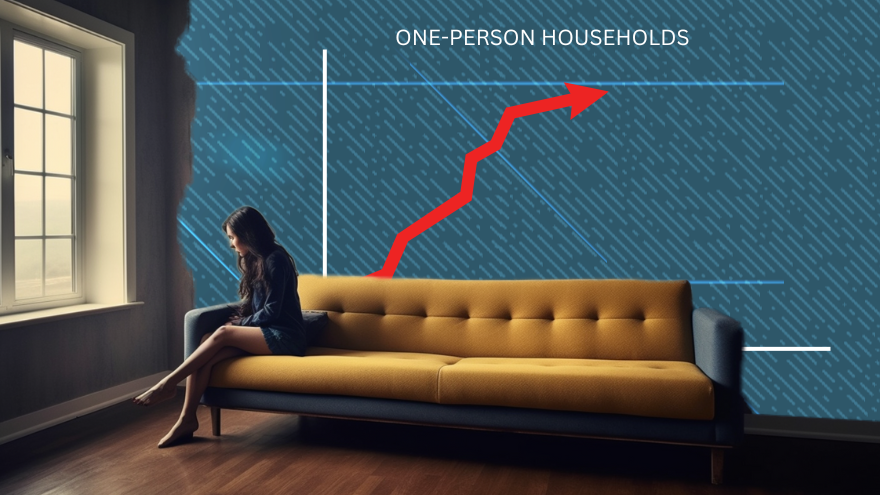More people in the United States are living alone according to newly released data from the 2020 Census.
The demographic shift marks a continued change in cultural attitudes toward marriage and singleness.
Almost 35% of households in America are inhabited by one person who lives alone or by two or more people who are unrelated. Nonfamily households increased by 12% between 2010 and 2020 – surpassing the 7% increase in family households.
For comparison, just 7.7% of households were comprised of one person in the 1940s.
Female households without a spouse and with no children increased by nearly 26% over the ten-year period while male households with no spouse or children increased by 33%.
Married households are still the majority of households in the U.S. despite a steady decline since the 1990s. Married couple households represented 55% of households in 1990, 51% in 2000, 48% in 2010, and 46% in 2020.
Married couples made up 58.7 million of the 127 million households in 2020. Another 8.8 million households were couples who cohabitate but are unmarried. The number of married couples living with their own children decreased by 5.5% in the last decade.
The changes in household dynamics coincide with shifting attitudes toward marriage.
Marriage rates have declined in America since the 1960s – reaching a 50-year low in 2020. Between 2019 and 2020, marriage rates declined by 16.8% — 2,015,603 to 1,676,911.
According to the National Center for Health Statistics:At the state level, the declines in marriage rates were widespread – 46 states and the District of Columbia saw declines in marriage during 2020. The biggest declines occurred in the following states: Hawaii (47.9%), California (43.9%), New Mexico (43.3%), New York (37.5%) and Louisiana (33.3%). All the declines were statistically significant except for in three states: Idaho, South Dakota, and Wyoming, where declines were only 2%.
Marriage only increased in Montana, Texas, Alabama, and Utah in 2020.
In 2019, Tech Times reported that more Americans were opting to stay single rather than enter into long-term relationships. FiveThirtyEight reported the same observation in 2023, noting that more people, “particularly young women,” were single than before the COVID-19 pandemic. Data from the Survey Center on American Life found that 41% of singles said “they’re not currently dating anyone and not looking to date” and that 42% reported that “they were not dating someone but open to it.”
“Older people had different justifications for not dating than younger people — but for the most part, it wasn’t because they felt undesirable,” noted FiveThirty Eight. “Instead, more people said that they like being single, can’t find someone who meets their expectations, or just have more important priorities right now.”
America’s declining marriage rate has paralleled a decline in the national birth rate.

